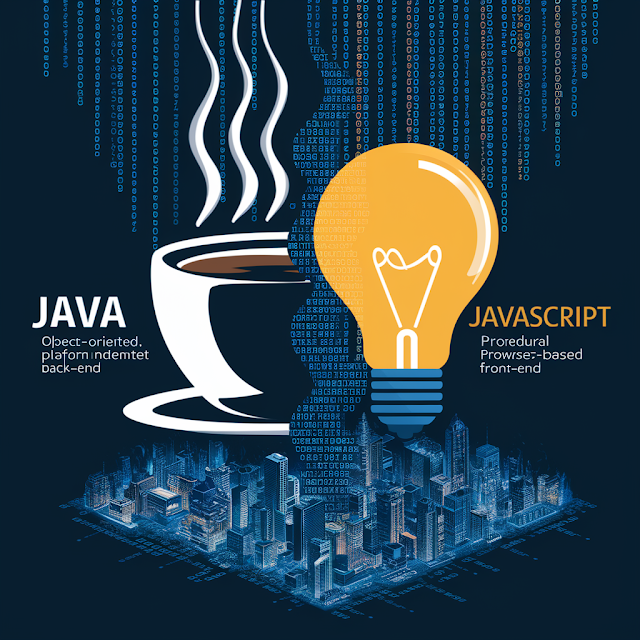What is The Difference Between Java And Javascript ?
What is The Difference Between Java And Javascript ?
Java and JavaScript are two distinct programming languages with different purposes, syntax, and use cases.
Here are some key differences between them:
1. Purpose:
Java is a general-purpose, object-oriented programming language designed for building robust, platform-independent applications, such as web applications, mobile apps, desktop software, and enterprise systems.
JavaScript, on the other hand, is a scripting language primarily used for web development. It runs in web browsers and is used to create dynamic and interactive web pages. JavaScript is also widely used in server-side development (Node.js), game development, and mobile app development.
2. Syntax and Structure:
Java has a syntax similar to C++ and C#, featuring classes, objects, inheritance, interfaces, and strong typing. It requires compilation before execution, meaning the code needs to be compiled into bytecode and then run on a Java Virtual Machine (JVM).
JavaScript has a syntax similar to C and Java, but it is more lightweight and flexible. It supports functional programming paradigms and dynamic typing. JavaScript code is typically embedded directly into HTML pages and executed by web browsers without the need for compilation.
3. Execution Environment:
Java applications run on a Java Virtual Machine (JVM), which provides platform independence by allowing Java code to run on any device or operating system that supports the JVM.
JavaScript code runs within a web browser's JavaScript engine (e.g., V8 engine in Chrome, SpiderMonkey in Firefox). With the advent of Node.js, JavaScript can also be executed on server-side environments outside of the browser.
4. Typing:
Java is statically typed, meaning variable types are explicitly declared at compile time and cannot be changed during runtime.
JavaScript is dynamically typed, allowing variables to hold values of any data type, and variable types are determined at runtime.
5. Usage:
Java is commonly used for building enterprise-level applications, Android mobile apps, server-side applications (using frameworks like Spring and Hibernate), and large-scale distributed systems.
JavaScript is primarily used for client-side web development (interactivity, animations, form validation, etc.), server-side development (with Node.js), building web applications (using frameworks like React, Angular, or Vue.js), and browser extensions.
6. Community and Ecosystem:
Java has a mature ecosystem with extensive libraries, frameworks, tools, and community support.
JavaScript has a vast and rapidly evolving ecosystem with a wide range of libraries, frameworks (both front-end and back-end), tools, and active community participation.
While both languages share some common syntax due to their C-like heritage, they serve different purposes and are used in different domains of software development.
